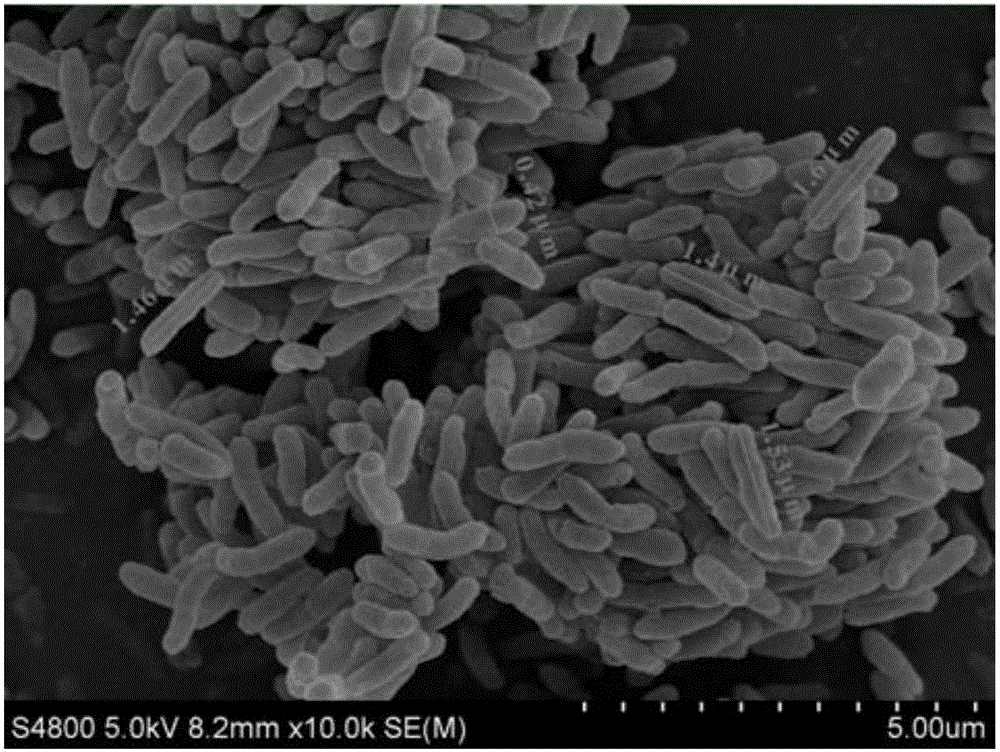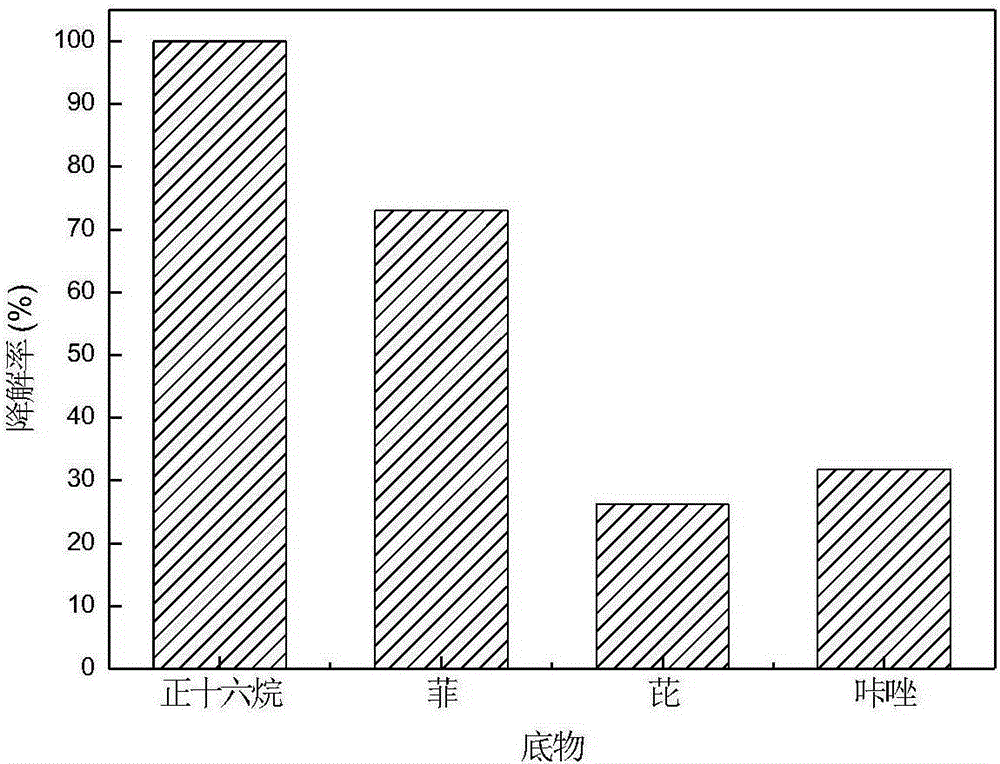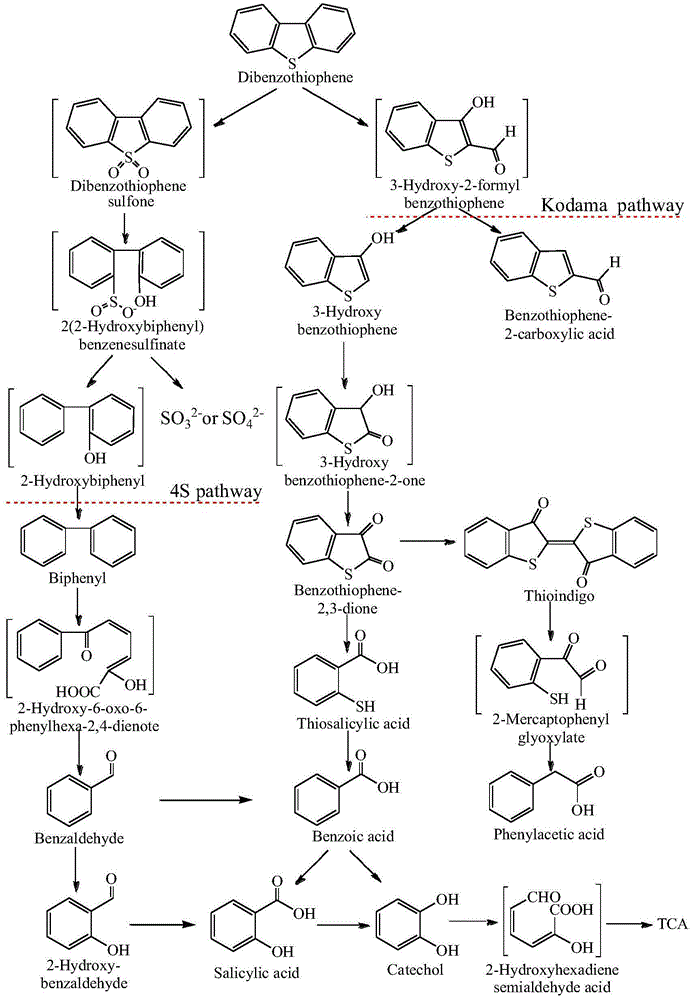Pseudomonad strain and application thereof in degrading petroleum pollutants
A technology of Pseudomonas and petroleum, applied in the field of Pseudomonas and its application in the degradation of petroleum pollutants, can solve the problem of low bioremediation value and achieve the effect of high bioremediation value
- Summary
- Abstract
- Description
- Claims
- Application Information
AI Technical Summary
Problems solved by technology
Method used
Image
Examples
Embodiment 1
[0036] Example 1: Dibenzothiophene degradation
[0037] The Pseudomonassp.LKY-5 strain was inoculated into 100 mL of an inorganic salt medium containing 100 mg / L dibenzothiophene. 30℃, pH7.5, inoculation amount 10wt%, 160rpm shaker culture for 7 days, after acidification with 6M HCl to pH≤2, add an equal volume of ethyl acetate for extraction, centrifuge at 4℃, 5000rpm for 10min, take the supernatant The liquid was measured by Bruker450 gas chromatograph (FID, HP5 capillary column), and the degradation rate of dibenzothiophene reached 100%.
Embodiment 2
[0039] The Pseudomonassp.LKY-5 strain was respectively inoculated into an inorganic salt medium containing 100 mg / L of phenanthrene, pyrene, carbazole, and n-hexadecane at 30°C, pH 7.5, inoculation volume 10 wt%, and 160 rpm shaker culture 7 In days, n-hexadecane was measured by Bruker450 gas chromatograph. Phenanthrene, pyrene and carbazole were determined by high performance liquid chromatography Waters2695, using UV detector, Waterssunfire C18 reversed phase chromatography column (column length 150mm, inner diameter 4.6mm, packing 5μm), the column was kept at 25℃, and the absorption peak of the substance was detected at 254nm Mobile phase A is water containing 0.5% trifluoroacetic acid, and mobile phase B is acetonitrile containing 0.5% trifluoroacetic acid. Using gradient elution, see Table 1.
[0040] Table 1 Gradient elution program
[0041]
[0042] The result is figure 2 As shown, Pseudomonassp.LKY-5 has a degradation effect on n-hexadecane, phenanthrene, pyrene and car...
Embodiment 3
[0044] Add 2mL of commercially available No. 0 diesel (density 0.841g / mL) and 2mL of Qingdao Refinery Catalytic Cracking Diesel (density 0.9468g / mL) to the inorganic salt medium (the final volume of the medium is 30mL), Pseudomonassp.LKY The inoculation amount of strain -5 was 10wt%, and the uninoculated strain was used as a blank control. 30℃, 160rpm, 7 days after incubation time, the blank control and the degraded oil-containing medium were extracted with petroleum ether (30~60℃) by shaking, and the extracts were combined, centrifuged at 5000rpm, 4℃ for 10min, and subjected to anhydrous sulfuric acid After the sodium is dehydrated, it is rotary evaporated under reduced pressure at 30°C until the petroleum ether is completely volatilized, then transferred to a chromatographic bottle, and analyzed by a US Varian 3800 gas chromatograph. The detector is a pulsed flame photometric detector (PFPD), HP-5NS quartz capillary column (30m×0.32mm×0.25μm), injection volume 1μL, split rati...
PUM
 Login to View More
Login to View More Abstract
Description
Claims
Application Information
 Login to View More
Login to View More - R&D
- Intellectual Property
- Life Sciences
- Materials
- Tech Scout
- Unparalleled Data Quality
- Higher Quality Content
- 60% Fewer Hallucinations
Browse by: Latest US Patents, China's latest patents, Technical Efficacy Thesaurus, Application Domain, Technology Topic, Popular Technical Reports.
© 2025 PatSnap. All rights reserved.Legal|Privacy policy|Modern Slavery Act Transparency Statement|Sitemap|About US| Contact US: help@patsnap.com



